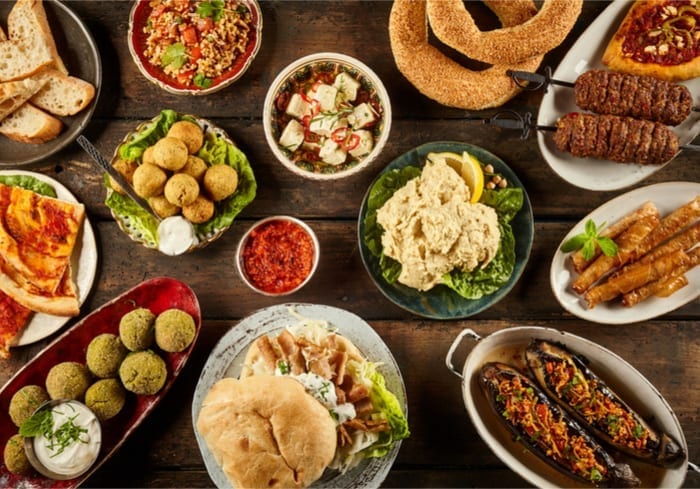
The digital food delivery business is an unforgiving space, and leaders there are not guaranteed of position. That applies to companies such as Grubhub, which on Tuesday (July 30) reported its second quarter 2019 earnings — a report that did not exactly please investors, and which hinted at some contraction to come.
Among the main points from that Q2 earnings report was revenue of $325 million, a 36 percent year-over-year increase that beat analyst expectations. Analysts had also expected earnings of 30 cents per share, but Grubhub reported 27 cents per share, which itself was about 46 percent lower than the second quarter of 2018. As for full-year expectations, Grubhub on Tuesday said its revenue in the next financial period would be between $1.34 billion and $1.39 billion — that compares to previous expectations issued in Q1 of between $1.31 billion and $1.41 billion.
Q2 Metrics
In other Q2 metrics, Grubhub posted a 30 percent year-over-year increase in active diners to 20.3 million, and a 16 percent year-over-year increase in daily average grubs to nearly 489,000. Gross food sales increased 20 percent to some $1.5 billion.
“The team continued executing in the second quarter, adding thousands of new, high-quality independent and enterprise restaurants and growing our active diner base to more than 20 million,” said Matt Maloney, Grubhub founder and CEO. “We are excited about the trajectory of our two-sided marketplace — both in terms of geographic diversity and depth in individual markets. Restaurants are increasingly valuing the incremental sales and products we provide, while diners highly regard our robust restaurant selection and consistently low transaction fees.”
The new Grubhub financials come amid a frenzied time for online food delivery aggregators, which are competing to win over new partners and win new business. As well, doubt and skepticism have been creeping in when it comes to the viability of Grubhub in this space. Such views have been sparked by a variety of changes. Uber has been highly focused on its Uber Eats food delivery service and investing heavily. More critically, however, DoorDash is currently valued at $7.1 billion and is rapidly eating up Grubhub’s market share.
New Players
Newer players are also playing bigger roles in the food delivery space — sometimes via partnerships with existing players. For instance, OpenTable, an online restaurant reservation company, recently said it has partnered with Caviar, Grubhub and Uber Eats to provide delivery from restaurants all over the country, according to reports.
The company has also revamped its mobile interface. The home screen now offers user recommendations based on past customer choices, favorites and other user-centric options.
Now customers can get options delivered in just a few steps. On the app, customers will see a “get it delivered” button, which will take them to either the restaurant’s preferred partner or a list of delivery options.
OpenTable said its three main partners will provide deliveries for upwards of 8,000 restaurants through 90 cities in the States. It plans to eventually provide delivery times and costs inside the app.
The move coincides with Google’s recent foray into delivery partnerships. The company brought Postmates, DoorDash, ChowNow, Delivery.com, Slice and others to its Search, Maps and Assistant platforms.
Google also started an Order Online shortcut with results for people using Google Assistant on mobile phones, which also allows users to place orders using Google Pay.
The competitive food delivery market could balloon to $24 billion by the year 2023, from $17 billion this year. Much of the demand for delivery services is driven by millennials, according to a study by Acosta and Technomic, which found that 77 percent of millennials used a delivery service in the past three months, as opposed to just 51 percent of all diners. Also, 44 percent of millennials ordered from third-party services compared to 20 percent of all diners.
Competition continues to increase — and in new ways that include mobile-order ahead, which puts further pressure on the food delivery space and is leading to new innovations. According to the PYMNTS Mobile Order-Ahead Tracker, the volume of orders placed via mobile apps increased 130 percent between 2016 and 2018, and mobile orders now represent approximately 60 percent of all digital food orders.
Companies like DoorDash, Grubhub and Uber Eats are all trying to win over customers, but the core of their business models is very much the same: picking up and delivering food to mobile app users. Beyond pricing models and fee structures, it is the exclusive restaurant partnerships that can act as differentiators in the increasingly crowded landscape. So it was a big deal earlier in July when McDonald’s announced its new alliance with DoorDash, effectively terminating the relationship the quick-service restaurant (QSR) chain had with Uber Eats since 2017.
Grubhub is just one player in a fiercely competitive field that is constantly changing.